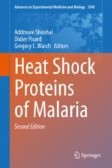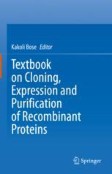Search
Search Results
-
Genetic Determinants of Persistence in Escherichia coli
Persisters comprise a small fraction of cells within a bacterial population that transiently are tolerant to lethal doses of antibiotics. Following...
-
Proteomic response of Turicibacter bilis MMM721 to chicken bile and its bile acids
ObjectiveBile and its individual components, mainly bile acids, are important for digestion and drive bacterial community dynamics in the upper...

-
Clinical and Molecular Findings of Autosomal Recessive Spastic Ataxia of Charlevoix Saguenay: an Iranian Case Series Expanding the Genetic and Neuroimaging Spectra
Autosomal recessive spastic ataxia of Charlevoix Saguenay (ARSACS) is now increasingly identified from all countries over the world, possibly...

-
A disulfide-bonded DnaK dimer is maintained in an ATP-bound state
DnaK, a major Hsp70 molecular chaperones in Escherichia coli , is a widely used model for studying Hsp70s. We recently solved a crystal structure of...

-
Anti-migraine agents from an immunological point of view
The new wave of anti-migraine agents is nothing less than a milestone in our battle to manage this devastating disease. However, concerns have...
-
Transcriptome Analysis of Persian Oak (Quercus brantii L.) Decline Using RNA-seq Technology
Since the late 1980s, the oak decline has affected the Zagros oak forests in western Iran. Persian oak ( Quercus brantii L.) the most important tree...

-
A One Health Perspective on a Multi-hurdle Approach to Combat Campylobacter spp. in Broiler Meat
Purpose of reviewThis review focuses on the current knowledge of factors and steps that promote survival and distribution of Campylobacter spp....
-
Comparative Genomic, Transcriptomic, and Proteomic Analysis of the Limosilactobacillus fermentum U-21 Strain Promising for the Creation of a Pharmabiotic
AbstractCurrently, the world is undergoing revolutionary changes in the development and use of pharmacological preparations based on bacteria and...

-
Deep sequencing reveals new roles for MuB in transposition immunity and target-capture, and redefines the insular Ter region of E. coli
BackgroundThe target capture protein MuB is responsible for the high efficiency of phage Mu transposition within the E. coli genome. However, some...

-
Role of the J Domain Protein Family in the Survival and Pathogenesis of Plasmodium falciparum
Plasmodium falciparum has dedicated an unusually large proportion of its genome to molecular chaperones (2% of all genes), with the heat shock...
-
Regulation of Hsf1 and the Heat Shock Response
The heat shock response (HSR) is characterized by the induction of molecular chaperones following a sudden increase in temperature. In eukaryotes,...
-
Detecting Persister Awakening Determinants
For long, persistence research has focused primarily on disentangling mechanisms of persister state entry. Due to the rapid advances in the field of...
-
Long-term exposure to food-grade disinfectants causes cross-resistance to antibiotics in Salmonella enterica serovar Typhimurium strains with different antibiograms and sequence types
BackgroundDisinfectants are important in the food industry to prevent the transmission of pathogens. Excessive use of disinfectants may increase the...

-
Complete genome analysis of an active prophage of Vibrio alginolyticus
An active prophage, Vibrio phage ValM-yong1, was isolated from pathogenic Vibrio alginolyticus by mitomycin C induction. This phage is a member of...

-
Remarkably coherent population structure for a dominant Antarctic Chlorobium species
BackgroundIn Antarctica, summer sunlight enables phototrophic microorganisms to drive primary production, thereby “feeding” ecosystems to enable...

-
A semi-tryptic peptide centric metaproteomic mining approach and its potential utility in capturing signatures of gut microbial proteolysis
BackgroundProteolysis regulation allows gut microbes to respond rapidly to dynamic intestinal environments by fast degradation of misfolded proteins...

-
Immunization Strategies Against Clostridioides difficile
Clostridioides difficile (C. difficile) infection (CDI) is an important healthcare but also a community-associated disease. CDI is considered a...
-
Role of Heat Shock Proteins in Immune Modulation in Malaria
Malaria is one of the major parasitic killer diseases worldwide. Severe cases of malaria are mostly in children under the age of 5 years due to their...
-
Metagenomic insights into the taxonomy, function, and dysbiosis of prokaryotic communities in octocorals
BackgroundIn octocorals (Cnidaria Octocorallia), the functional relationship between host health and its symbiotic consortium has yet to be...

-
Purification of Difficult Proteins
Protein expression and purification have been reviewed comprehensively over the years by researchers. Despite the advances in technology made in this...
